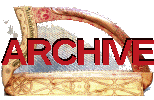

|
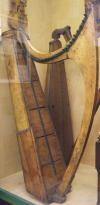
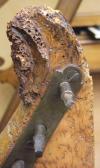
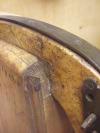
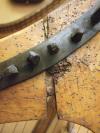
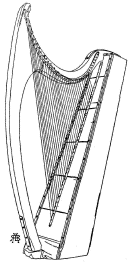
Probably made c. late 18th or early 19th Century
Owned by the Victoria and Albert Museum, London, England.
"High Headed" design;
38 strings, longest 107cm
This curious harp was given to the South Kensington Museum (forerunner of the V&A) in 1872 by The Ven. Archdeacon Saurin of Armagh. However I don’t know where he may have got it from.
Some people have suggested that it belonged to Arthur O’Neill (1737-1818), because he is shown in his portrsait holding a similar large harp with a scroll on the peak. (see his portrait). However I am sceptical about this, because there are differences e.g. the number of strings.
Pre-1800 Irish or Gaelic harps usually have a soundbox carved from a single log of wood; some late examples have a box glued up from planks, but still retaining the longitudinal grain on the front.This harp by contrast has a crossgrained softwood soundboard, and an oblique base allowing it to balance upright in a playing position. These design features come from Continental pedal harp design. The soundbox also seems rather crudely made.
Some people have suggested the harp was made after the tradition was dying in the 19th century, made by someone without real knowledge of either the Gaelic harp or pedal harp traditions. But I wonder if it is actually a genuinely 18th century Irish harp neck and pillar, with a much inferior 19th century replacement soundbox.
Information sheet from the V&A website.
Simon Chadwick